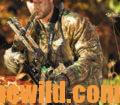Editor’s Note: One of the most-effective methods of taking game is stalking. Man was not the originator of stalking techniques, but merely the imitator. He observed cats as they stalked and killed their prey. He watched foxes move in close for their attacks. He saw other predators as they closed the distance and then came in for the kill. Because of his primitive weapons – his spear, knife and bow and arrow – early man had to learn to stalk in close if he wanted to harvest game and survive. He was a part of all that was around him. He moved with the ease of a warm summer’s breeze that never had been seen and barely felt. He was a predator who moved in for a clean kill and then left. He was a silent stalker of deer.
Mike Sanders of Louisiana anticipates the buck’s seeing him first when he’s stalking. “My hunting club has two types of places to hunt – the hills and the swamp. When I’m hunting hills, I assume that the buck will spot me first. So, the most-important ingredient in my success in the hills is that I know the terrain and have identified the deer’s escape routes. I’ve found that when you jump a 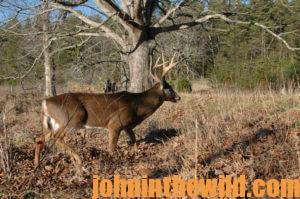 buck between two hills, he may run straight away for a distance. But unless he’s picked-up your scent, he generally will circle to either the right or the left and return to see what’s spooked him.
buck between two hills, he may run straight away for a distance. But unless he’s picked-up your scent, he generally will circle to either the right or the left and return to see what’s spooked him.
Sanders begins his stalk between two hills. He starts at the bases of a valley and walks the little gullies or streams that come down between the two ridges. Often he may hear a buck get up. However, even if he doesn’t, he assumes he’s spooked the deer. When he reaches the top of the hill, he turns around and walks right back down between the two hills he’s just walked up. Then when he reaches the base, he moves over to the next hollow, either to the right or the left. If Sanders knows the buck’s escape route, he’ll understand which hollow to go up. But if he’s not sure which hill the buck has run over, he’s got a 50% chance of seeing him – whether he goes right or left.
As Sanders starts up the second hollow, he’ll move very slowly and quietly. “I prefer to stalk in boots with soles that are almost worn out, so I can feel twigs and sticks under my feet,” Sanders says. “I try not to break them. If I’ve guessed right – I’ll catch the buck moving on the opposite side of the hill that I’ve just stalked up. Generally a buck will circle and go right back to the hollow from where he’s been frightened. What I try to do is intercept him on his return route.”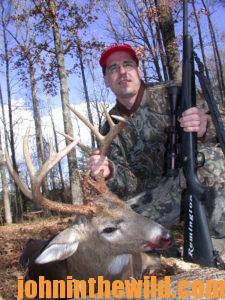
Often Sanders’ wife and brother-in-law will stalk with him. They’ll stalk adjacent hollows. Usually one of them will jump a buck that one of the others will take. Knowing the routes a buck will travel when he’s spooked and which route he’ll use to return to his favorite hollow have been responsible for them bagging many bucks.
But as Sander emphasizes, “This method won’t work if the buck smells the hunter. Although a whitetail will investigate something he can’t distinguish by sight or sound, he always will flee from human scent. I use a masking scent. In my opinion, hunting hills is the most-difficult aspect of stalk hunting deer because your vision is limited by hills on either side.”
Sanders mentions that does are often the key to getting close to the bucks. Never forget that the buck learns how to survive from the does during the first year he’s on earth. If you’ll watch a doe, you’ll see she’s constantly looking for danger, testing the air with her nose and looking to see what her yearlings are doing and what danger may be waiting for them. She’s always on the alert.
“So, if you come up on a group of feeding deer that may contain both bucks and does, you have to be extremely careful not to spook the does,” Sanders emphasizes. “The females are much like a radar system that the buck uses to alert himself to danger. Many times I’ll have to slip past the does to get close enough to take a shot at a buck. When I get within range to take a shot, I feel that my stalk has been successful – whether I bag the buck or not.”
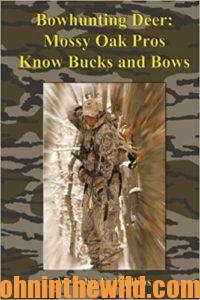 To learn more about bowhunting deer, check out John E. Phillips’ bowhunting books, available in Kindle, “Bowhunting Deer: Mossy
To learn more about bowhunting deer, check out John E. Phillips’ bowhunting books, available in Kindle, “Bowhunting Deer: Mossy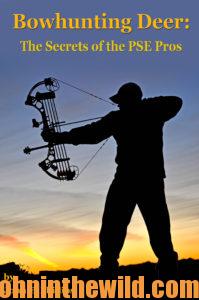 Oak Pros Know Bucks and Bows” (http://amzn.to/1QGvdQx) and “Bowhunting Deer: The Secrets of the PSE Pros” (http://amzn.to/VBr1qW). You may have to copy and paste these clicks into your browser. (When you click on this book, notice on the left where Amazon allows you to read 10% of the book for free).
Oak Pros Know Bucks and Bows” (http://amzn.to/1QGvdQx) and “Bowhunting Deer: The Secrets of the PSE Pros” (http://amzn.to/VBr1qW). You may have to copy and paste these clicks into your browser. (When you click on this book, notice on the left where Amazon allows you to read 10% of the book for free).
Tomorrow: Stalking Fields, Roads and Water and Knowing the Ingredients for a Successful Stalk to Take Buck Deer

